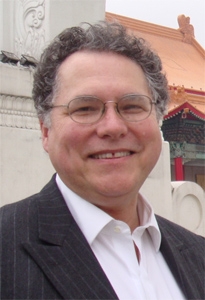Section 111(d)
PART III – EPA’s Proposed 111(d) Rule: Some Insights & Open Legal Questions
The third in a series of posts offering some initial insights and observations, and posing several open legal questions for conversation
This is the third in a series of posts offering some initial insights and observations, and posing several open legal questions related to EPA’s proposed 111(d) rule. (See the first and second posts.) Over the course of this series, I welcome our knowledgeable and insightful LegalPlanet audience to join the dialogue in the comments. What …
Continue reading “PART III – EPA’s Proposed 111(d) Rule: Some Insights & Open Legal Questions”
CONTINUE READINGPART II – EPA’s Proposed 111(d) Rule: Some Insights & Open Legal Questions
The second in a series of posts offering some initial insights and observations, and posing several open legal questions for conversation
This post is the second in a series of posts offering some initial insights and observations, and posing several open legal questions related to EPA’s proposed 111(d) rule. (See the first post here.) Over the course of this series of posts, I welcome our knowledgeable and insightful LegalPlanet audience to join the dialogue in the …
Continue reading “PART II – EPA’s Proposed 111(d) Rule: Some Insights & Open Legal Questions”
CONTINUE READINGLegislative Tantrums Over EPA’s Proposed Carbon Rule
Politico reports that eight state legislatures have passed bills protesting EPA’s proposed power plant regulation, in at least one case refusing to comply with any eventual regulations. This was a childish tantrum rather than an adult response. The ultimate hope, according to Politico, is that many states will refuse to submit compliance plans, and that this …
Continue reading “Legislative Tantrums Over EPA’s Proposed Carbon Rule”
CONTINUE READINGEPA’s Proposed 111(d) Rule: Some Insights & Open Legal Questions (PART I)
The first in a series of posts offering some initial insights and observations, and posing several open legal questions for conversation
As LegalPlanet reported earlier this week, EPA has released a proposed rule to regulate carbon dioxide (CO2) emissions from existing power plants under Clean Air Act § 111(d). You can read the full text of the proposed rule here. The rule would have the overall effect of reducing CO2 emissions from existing power plants or “electric generating units” …
Continue reading “EPA’s Proposed 111(d) Rule: Some Insights & Open Legal Questions (PART I)”
CONTINUE READINGThe Legal Basis for the 111(d) Rule
EPA has structured the rules to protect against legal challenges.
Megan has done a great job of explaining the background of the rules and summarizing the proposal in her blog posts. I just wanted to add a quick note about how EPA has structured its rules in light of possible legal challenges. The fundamental issue facing EPA is how to define the “best system” for reducing …
Continue reading “The Legal Basis for the 111(d) Rule”
CONTINUE READINGEPA Releases Section 111(d) Rule for Existing Power Plants
Rule would reduce climate change-related carbon dioxide emissions from existing power plants 30 percent below 2005 levels by 2030
Today, EPA formally released its long-awaited rule to regulate carbon emissions from existing power plants under Clean Air Act § 111(d). Read the full text of the rule here. As leaked to the media yesterday, the rule would have the overall effect of reducing carbon dioxide emissions from electric generating units (EGUs, or power plants) 30 percent …
Continue reading “EPA Releases Section 111(d) Rule for Existing Power Plants”
CONTINUE READINGEPA to Release Proposed Rule for Existing Power Plants under Clean Air Act 111(d) that Cuts Carbon Emissions 30% from 2005 Levels by 2030
This rule represents one of the most significant actions ever taken by the United States to mitigate climate change
Major news outlets are reporting that the U.S. Environmental Protection Agency (EPA) will release on Monday a proposed rule for the regulation of existing power plants under Clean Air Act section 111(d) that would reduce carbon emissions from the electrical generating sector 30 percent from 2005 levels by 2030. This rule follows the recent release …
CONTINUE READINGObama’s Section 111d Plan Has Support From George H.W. Bush’s EPA General Counsel, Utility Executives
E. Donald Elliott calls EPA’s approach
When President Obama’s Environmental Protection Agency releases its Clean Air Act Section 111(d) regulations to control greenhouse gases emitted by the electricity sector on Monday, we can expect howls of protest from the usual suspects: Congressional Republicans, industry groups representing big coal interests, even some coal-state Democrats. But the Obama approach is already receiving praise …
CONTINUE READINGGuest Blogger Kate Konschnik: EPA’s 111(d) Authority – Follow Homer and Avoid the Sirens
Kate Konschnik is the Director of Harvard Law School’s Environmental Policy Initiative. The views expressed in this blog post are her own. Thirty years ago, Chevron v. NRDC set the standard for judicial deference to an agency’s statutory interpretation. In that case, the Supreme Court upheld EPA’s interpretation of Clean Air Act language. This month, …
CONTINUE READINGLots of Rhetoric, Not Much New in Obama’s Climate Plan
The Obama Administration just released a “Climate Action Plan” to accompany the speech the President will give this morning at Georgetown University. I applaud the President for delivering a speech devoted exclusively to climate change. But for all the hooplah surrounding the President’s speech as “major,” the measures he’s proposed in the new plan to …
Continue reading “Lots of Rhetoric, Not Much New in Obama’s Climate Plan”
CONTINUE READING





